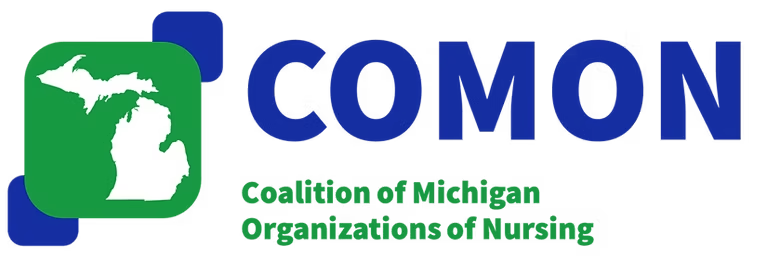By early November 2025, Americans across the country are refreshing their bank apps in disbelief — spotting a mysterious deposit labeled “U.S. Treasury 310 TAX REF.”
No, it’s not a glitch or another pandemic-style stimulus check — it’s part of the Federal Inflation Adjustment Initiative, a one-time $2,000 payment designed to counter the lingering cost-of-living strain as the year winds down.
The IRS and U.S. Treasury Department have confirmed that these deposits began hitting accounts on November 1, 2025, and will continue through November 20.
Think of it as an end-of-year economic cushion — a quiet yet powerful move to help working Americans breathe a little easier.
What is $2,000 Payment and Why Now?
The payment comes under the 2025 Budget Reconciliation Framework, targeting low- and middle-income households struggling with inflation.
Rising costs of rent, groceries, utilities, and healthcare have left many feeling squeezed despite an improving economy. Treasury officials describe the initiative as a “short-term bridge, not a bailout.”
“This isn’t a stimulus — it’s a calibration,” said one senior Treasury spokesperson.
“A one-time correction to protect household liquidity in an uneven recovery.”
Unlike previous pandemic relief rounds, there’s no application, no signup, no website crash.
If you filed your 2024 tax return, you’re automatically in.
Who Qualifies for the $2,000 Direct Deposit?
Eligibility is based on your 2024 federal tax return, including your income, filing status, and refund details.
| Filing Status | Full $2,000 Payment | Phase-Out Range | No Payment Above |
|---|---|---|---|
| Single | ≤ $70,000 | $70,001 – $100,000 | $100,000+ |
| Married Filing Jointly | ≤ $150,000 | $150,001 – $200,000 | $200,000+ |
| Head of Household | ≤ $112,500 | $112,501 – $150,000 | $150,000+ |
Must have a valid Social Security number
Must be a U.S. citizen or lawful resident
Must have earned income reported on a 2024 return
If you’re above these thresholds, you might still receive a partial payment based on a sliding scale.
When and How You’ll Get Paid
Payments began rolling out November 1, 2025, and will continue through November 20 in scheduled batches.
- Direct deposits: First priority — fastest delivery
- Paper checks & debit cards: Mailed by early December for those without direct deposit
Watch your transaction history for the label “U.S. Treasury 310 TAX REF.”
If your bank account changed since filing taxes, don’t panic — the IRS will automatically re-route your payment via paper check.
How to Track Your Payment
The IRS has updated two online tools to help you track your deposit:
- Get My Payment – Displays if your relief payment has been issued, scheduled, or delayed.
- Where’s My Refund? – Now includes 2025 inflation relief payment tracking.
Both require your SSN or ITIN, filing status, and refund amount.
Systems refresh every 24 hours, so check back daily.
💡 Tip: If you haven’t received anything by December 15, 2025, you can still claim it as a Recovery Rebate Credit on your 2025 tax return.
Why $2,000 – and Why Now?
Even as inflation cooled from 2022’s record highs, essentials remain expensive.
The $2,000 amount is meant to strike a balance: enough to provide real relief without overstimulating the economy.
Economists describe it as “targeted liquidity support.”
It helps keep families stable, prevents late rent or utility defaults, and encourages local spending — all without triggering runaway inflation.
“Two thousand dollars doesn’t change a life,” says economist Rachel Monroe,
“but it absolutely changes a month.”
The Emotional Impact
For millions, this unexpected relief is more than just money — it’s validation.
After years of policy shifts and economic uncertainty, a deposit that just appears feels like a sigh of relief.
It’s reassurance that someone’s paying attention.
A family might use it to cover rent, stock the pantry, or catch up on medical bills.
For retirees, it could mean a warmer winter and fewer tough choices.
What You Should Do Right Now
If you think you qualify, take these steps before mid-November:
- Verify your bank information on your IRS account or 2024 tax return.
- Update your mailing address if you’ve moved recently — do it on IRS.gov.
- Check for offsets: Unpaid taxes or federal debts may reduce your payment.
- Monitor your bank account for the label “U.S. Treasury 310 TAX REF.”
If your account is outdated, don’t stress — the IRS will automatically issue a paper check.
Economic Ripple Effects
Economists are split:
Some worry these payments could nudge inflation slightly upward if too much cash floods the market.
Others believe it’s the perfect timing — giving working-class Americans a chance to catch up before holiday expenses hit.
Either way, this is one of the largest direct-payment efforts since the pandemic, projected to reach over 70 million Americans.
Final Thoughts
This $2,000 Federal Direct Deposit is more than a surprise windfall — it’s a signal of support in a tough economic stretch.
It’s simple, automatic, and precisely targeted — no signups, no confusion, just relief.
For many, it’s the right help at the right time.
So check your bank app — that quiet $2,000 deposit might just be your financial breather before winter.
FAQs
When will the $2,000 payments arrive?
Direct deposits are being sent Nov 1–20, 2025, with paper checks following in early December.
Who qualifies for the full $2,000?
Singles earning ≤ $70,000, heads of household ≤ $112,500, and married couples ≤ $150,000.
What if I didn’t file 2024 taxes?
You must file to qualify. Those who missed can file late and claim the amount as a Recovery Rebate Credit in 2026.
How will I know it’s my payment?
Look for “U.S. Treasury 310 TAX REF” in your bank transactions.

